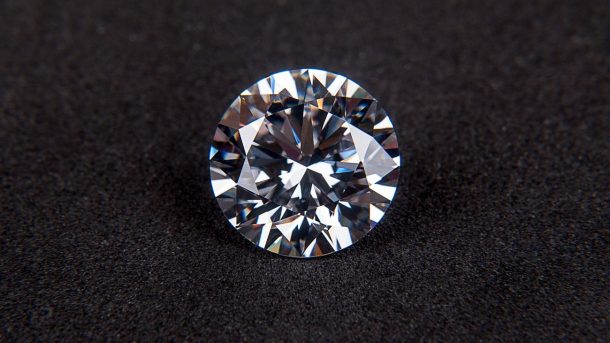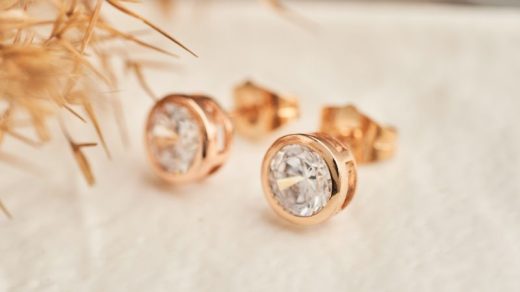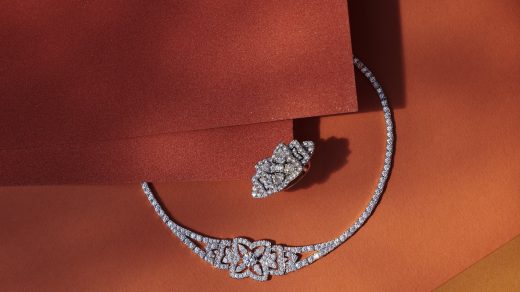Imagine holding a diamond in your hand, marveling at its breathtaking brilliance. Have you ever wondered what creates that dazzling display of light? In “Unlocking the Secrets: The Science Behind a Diamond’s Brilliance,” we take a closer look at the fascinating science behind these precious gemstones. This article is perfect for anyone who wants to delve into the world of diamonds and discover the secrets that make them sparkle like no other. Whether you’re a diamond enthusiast or simply curious about the mysteries of their brilliance, get ready to uncover the science that makes diamonds shine.
1. The Anatomy of a Diamond
1.1 Crystal Structure
The crystal structure of a diamond is what gives it its unique properties and brilliance. Diamonds are made up of carbon atoms arranged in a tightly packed lattice structure. This crystal lattice structure is what gives diamonds their exceptional hardness and durability. The arrangement of carbon atoms allows light to pass through the diamond and be refracted, resulting in the diamond’s brilliance and sparkle.
1.2 Refractive Index
The refractive index is a measure of how much light is bent or refracted as it passes through a diamond. Diamonds have a high refractive index, which means that they bend light more than other gemstones. This high refractive index is what gives diamonds their dazzling brilliance. When light enters a diamond, it is slowed down and bent as it passes through the dense crystal lattice structure. The light is then reflected internally within the diamond before exiting, creating the characteristic sparkle and brilliance.
1.3 Dispersion
Dispersion refers to the ability of a diamond to separate white light into its spectral colors. This is what creates the rainbow-like flashes of color, known as fire, that can be seen in a well-cut diamond. Dispersion occurs due to the different refractive indices of the different wavelengths of light. The diamond’s unique crystal structure and high refractive index allow for a high level of dispersion, enhancing its overall brilliance.
1.4 Scintillation
Scintillation is the sparkle or flash of light that can be seen when a diamond moves or is exposed to light. It is caused by the reflection and refraction of light within the diamond. When light enters the diamond, it is reflected off the internal surfaces and facets, creating a play of light and shadow. The precise alignment and symmetry of these facets contribute to the diamond’s scintillation. A well-cut diamond will exhibit a beautiful display of scintillation, further enhancing its brilliance.
1.5 Reflection
Reflection refers to the bouncing back of light when it encounters a surface. In the case of a diamond, when light enters the diamond and encounters the facets, it is reflected internally multiple times before exiting the diamond. This internal reflection is what gives diamonds their incredible brilliance. The angles and positioning of the facets play a crucial role in maximizing the reflection of light within the diamond, resulting in a more brilliant diamond.
2. The Role of Cut in Diamond Brilliance
2.1 Importance of Cut
The cut of a diamond plays a significant role in its overall brilliance and beauty. It refers to the way the diamond has been shaped and faceted, including the angles and proportions of the facets. A well-cut diamond maximizes the amount of light that enters the diamond, reflects internally, and exits with brilliance and fire. A poorly cut diamond, on the other hand, may result in light leakage or poor reflection, significantly reducing its brilliance.
2.2 The Cutting Process
The cutting process involves skilled craftsmen who carefully shape and facet rough diamonds into their final polished form. Each facet is cut and polished at specific angles and positions to optimize light reflection and refraction. The cutting process requires precision and expertise to unlock the maximum brilliance and beauty of a diamond. It is vital to strike a balance between retaining as much carat weight as possible while creating the ideal cut.
2.3 Factors Affecting Cut
Several factors influence the cut of a diamond, including the proportions, symmetry, and polish. Proportions refer to the angles and measurements of the facets in relation to one another. Symmetry relates to the alignment and uniformity of the facets. Polish refers to the smoothness and quality of the diamond’s surface. These factors collectively determine how light interacts with and performs within the diamond. A well-cut diamond will exhibit excellent sparkle, fire, and brilliance.
2.4 Ideal Cut
An ideal cut diamond is one that has been cut to specific proportions and angles to maximize its brilliance and beauty. The ideal cut proportions are based on scientific calculations that take into account the diamond’s refractive index and optical properties. An ideal cut diamond will reflect the most light and return it through the crown of the diamond, resulting in exceptional brilliance and sparkle.
2.5 Proportions and Symmetry
Proportions and symmetry are crucial elements of a diamond’s cut. The proportions determine how well light is reflected and refracted within the diamond. The angles and measurements of the facets must be carefully calculated to achieve the desired brilliance. Symmetry ensures that all the facets are aligned and uniform, allowing for optimal light performance. When a diamond is cut with precision proportions and symmetry, it will exhibit maximum brilliance and scintillation.
3. The Influence of Color on Diamond Brilliance
3.1 Color Grading
Diamonds come in a range of colors, from colorless to various shades of yellow and brown. The Gemological Institute of America (GIA) uses a standardized color grading scale to assess a diamond’s color. The scale ranges from D (colorless) to Z (light yellow or brown). Colorless diamonds are the most valuable and desired, as they allow more light to pass through and reflect, resulting in greater brilliance.
3.2 Diamond Color and Brilliance
The presence of color in a diamond can affect its overall brilliance. Colorful impurities or structural defects within the diamond can absorb or block light, reducing its brilliance and sparkle. However, the impact of color on brilliance depends on the level of color saturation. In some cases, fancy color diamonds, such as pink, blue, or yellow diamonds, can exhibit exceptional brilliance and beauty due to their unique color properties.
3.3 Optical Properties of Color
The optical properties of color in diamonds are complex and depend on the interaction between light and the diamond’s atomic structure. Light that passes through a colored diamond is selectively absorbed, reflected, or transmitted, depending on the specific color and integrity of the diamond. The interplay between these optical properties determines how light is perceived and contributes to the diamond’s overall brilliance.
3.4 Fancy Color Diamonds
Fancy color diamonds, also known as natural colored diamonds, are rare and highly sought after for their unique and vibrant hues. These diamonds derive their color from trace elements or structural defects during their formation process. Unlike colorless diamonds, fancy color diamonds are valued for their distinct coloration, which can range from soft pastels to intense, vivid shades. Fancy color diamonds can exhibit incredible brilliance and fire, making them captivating and prized gemstones.
3.5 Enhancing Brilliance with Color
While colorless diamonds are known for their brilliance, diamonds with a slight tint of color can also be beautiful and radiant. Some individuals prefer diamonds with a subtle hint of color, such as those in the near-colorless range (G to J), as they can offer a unique warmth and character. The choice of diamond color is a personal preference, and with expert guidance, you can select a diamond that suits your style and desired level of brilliance.
4. Understanding Clarity and Diamond Brilliance
4.1 Clarity Grading
Clarity refers to the presence of internal or external flaws, known as inclusions and blemishes, within a diamond. The GIA uses a standardized clarity grading scale to assess the clarity of a diamond. The scale ranges from Flawless (no inclusions or blemishes visible under 10x magnification) to Included (inclusions visible to the naked eye). Clarity plays a role in a diamond’s brilliance by influencing the way light enters and interacts with the internal structures of the diamond.
4.2 Impact of Inclusions on Brilliance
Inclusions within a diamond can interfere with the passage of light and hinder its ability to reflect and refract optimally, thus affecting brilliance. Large or numerous inclusions can obstruct light and create areas of reduced brilliance or even cause undesirable distortions. However, the impact of inclusions on brilliance depends on their size, location, and visibility. A well-cut diamond with minimal and strategically placed inclusions can still exhibit excellent brilliance.
4.3 Brilliance Enhancement Techniques
To enhance a diamond’s brilliance, various techniques can be employed to minimize the appearance of inclusions and improve light performance. One such technique is diamond clarity enhancement, which includes methods like laser drilling or fracture filling to reduce the visibility of inclusions. These techniques aim to optimize the diamond’s brilliance while maintaining its structural integrity. It is essential to seek the advice of a reputable jeweler and understand the treatment history of a diamond.
4.4 Balancing Clarity and Cut
When considering the clarity of a diamond, it is important to strike a balance between the diamond’s cut and its clarity grade. A diamond with a lower clarity grade but excellent cut can still exhibit exceptional brilliance and sparkle. Conversely, a diamond with a high clarity grade but a poorly cut can result in reduced brilliance. It is recommended to prioritize a diamond’s cut quality, as it has a more significant impact on its overall beauty and brilliance.
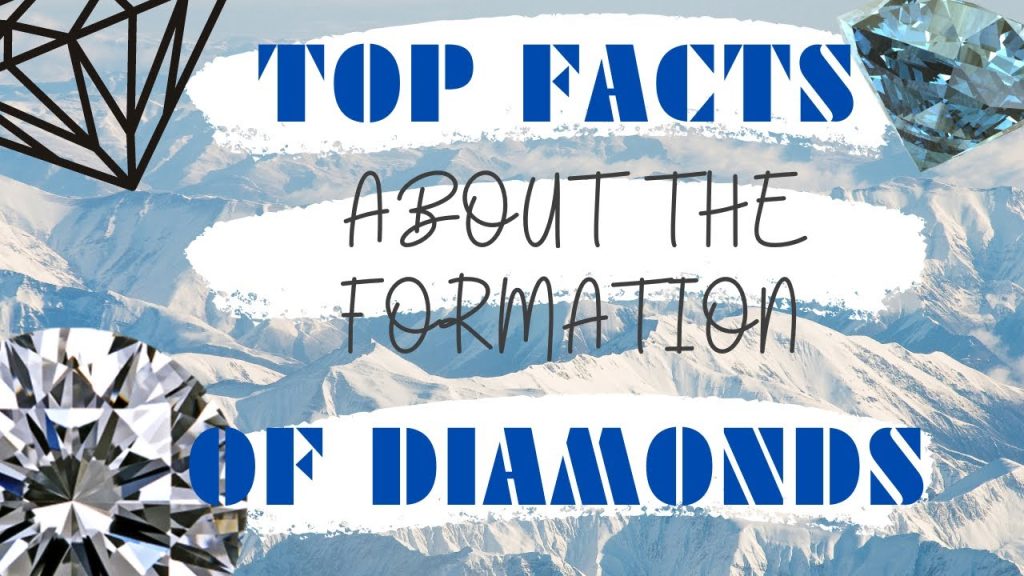
5. The Significance of Carat Weight in Diamond Brilliance
5.1 Carat Weight and Brilliance
Carat weight is a measure of a diamond’s size, with one carat equal to 200 milligrams. While carat weight does not directly affect a diamond’s brilliance, it can influence how light performs within the diamond. Light entering a larger diamond has a greater chance of reflecting and refracting multiple times, resulting in enhanced brilliance and scintillation. However, a diamond’s cut, color, and clarity also play critical roles in determining its brilliance, regardless of its carat weight.
5.2 The Relationship between Size and Brilliance
There is often a misconception that a larger diamond will always be more brilliant. However, the brilliance of a diamond is determined by a combination of factors, with the cut being one of the most significant. A well-cut, smaller diamond can actually outshine a larger, poorly-cut diamond. The precision and artistry of the cutting process can maximize a diamond’s brilliance, irrespective of its size.
5.3 Trade-Offs Between Size and Quality
When selecting a diamond, it is important to consider the trade-offs between size and quality. While a larger diamond may be visually impressive, compromising on cut, color, or clarity to achieve a larger carat weight can result in diminished brilliance. It is essential to prioritize the quality factors that directly contribute to brilliance, ensuring a balance between size and overall diamond beauty.
6. The Effects of Light on Diamond Brilliance
6.1 Natural vs. Artificial Light
The type of light that a diamond is exposed to can affect its perceived brilliance. Natural light, such as daylight or sunlight, provides a full spectrum of colors and can showcase a diamond’s brilliance and fire to its full extent. Artificial light sources, such as incandescent or fluorescent lighting, may alter the appearance of a diamond’s color and brilliance. It is important to view diamonds in a variety of lighting conditions to fully appreciate their beauty.
6.2 Lighting Conditions and Brilliance
The lighting conditions under which a diamond is viewed can significantly impact its perceived brilliance. Bright, direct lighting can enhance a diamond’s sparkle and scintillation, while diffused or low lighting conditions may lessen its brilliance. It is advisable to view diamonds under various lighting conditions to assess their performance and ensure their beauty is not compromised in different settings.
6.3 Practical Tips for Enhancing Brilliance
To enhance the brilliance of a diamond under different lighting conditions, some practical tips can be followed. Cleaning the diamond regularly ensures that dirt and oils do not obstruct light entry and reflection. Using a light-colored background can create contrast and allow the diamond’s brilliance to stand out. Additionally, avoiding excessive exposure to excessive heat or chemicals can help preserve the diamond’s brilliance over time.
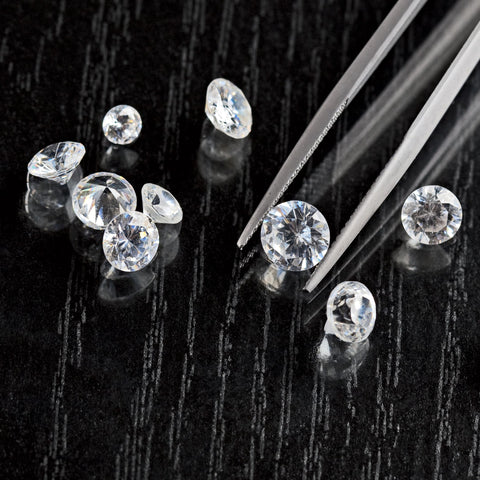
7. The Role of Diamond Certification in Brilliance
7.1 Certifying Diamond Quality
Diamond certification, also known as a diamond grading report, is an essential aspect of purchasing a diamond. It provides an unbiased and accurate assessment of a diamond’s quality, including its cut, color, clarity, and carat weight. A reputable and trusted gemological laboratory, such as the GIA, will thoroughly evaluate the diamond using sophisticated grading techniques and instruments. The certification assures buyers of the diamond’s authenticity, quality, and potential brilliance.
7.2 The Importance of Reliable Certification
Obtaining a reliable and recognized diamond certification is crucial in ensuring the authenticity and quality of a diamond. With a certified diamond, buyers can trust that the diamond has undergone rigorous examination by experienced gemologists and that the quality attributed to it is accurate. Reliable certification adds credibility and confidence in the purchase and provides a benchmark for assessing a diamond’s brilliance.
7.3 Understanding Diamond Reports
Diamond reports, or diamond certificates, contain detailed information about the diamond’s characteristics and quality. It includes the diamond’s precise measurements, color grade, clarity grade, cut grade (if applicable), and additional information such as fluorescence or any special features. Understanding the information provided in a diamond report can help buyers make informed decisions about diamond quality and ultimately, its potential brilliance.
8. Cutting-Edge Technologies for Analyzing Diamond Brilliance
8.1 Diamond Brilliance Measurement Techniques
Advances in technology have allowed for the development of sophisticated techniques and instruments to measure a diamond’s brilliance. These techniques may include ray tracing, computer modeling, and light performance analysis. By simulating how light interacts with a diamond’s structure, these technologies provide valuable insights into a diamond’s potential brilliance, allowing jewelers and consumers to make more informed choices.
8.2 The Role of Spectroscopy
Spectroscopy is a scientific technique that analyzes the interaction between light and matter. In diamond analysis, spectroscopy can provide detailed information about a diamond’s optical properties, including its absorption and transmission of light. This information helps evaluate the diamond’s color, transparency, and potential brilliance. Spectroscopy is a valuable tool in assessing the quality and beauty of diamonds.
8.3 Optical Mapping Technologies
Optical mapping technologies enable the visualization and mapping of light reflection and refraction within a diamond. These technologies use high-resolution imaging systems to capture and analyze the light performance of a diamond. By quantifying how light interacts with the diamond’s facets and surfaces, optical mapping technologies can identify areas of brilliance, areas of light leakage, or potential improvements in cut quality. This information aids in the evaluation and selection of diamonds with optimal brilliance.
8.4 Advances in Imaging Technologies
Advances in imaging technologies have revolutionized the ability to analyze and appreciate a diamond’s brilliance. High-resolution imaging systems now allow for detailed scrutiny of a diamond’s cut, symmetry, and proportions. Three-dimensional imaging techniques provide a virtual representation of the diamond, enabling precise evaluation of its visual performance and brilliance. These imaging technologies provide valuable insights for diamond cutters, jewelers, and consumers seeking the most brilliant diamonds.

9. Factors Affecting Diamond Brilliance Over Time
9.1 Wear and Tear Effects
Over time, a diamond may be subjected to wear and tear, resulting in a decrease in its brilliance. Daily activities, such as wearing jewelry, can expose diamonds to scratches, dirt, and oils, which can obstruct light entry and affect light performance. It is important to handle diamonds with care and take measures to protect and clean them regularly to maintain their brilliance.
9.2 Cleaning and Maintenance
Cleaning and maintaining a diamond is crucial for preserving its brilliance. Regular cleaning using mild solutions, warm water, and a soft brush can prevent the buildup of dirt, oils, and substances that may affect light reflection. Professional cleaning by a jeweler is also recommended periodically to ensure any hard-to-reach dirt or oils are removed. Proper maintenance ensures that a diamond’s brilliance is always dazzling.
9.3 Professional Inspection and Repair
Regular professional inspections of a diamond can identify any potential issues that may affect its brilliance. A skilled jeweler can assess the diamond’s condition, inspect its settings, and provide any necessary repairs or adjustments. This ensures that the diamond is performing optimally and maintains its brilliance over time. Seeking professional assistance when necessary can help preserve and enhance a diamond’s brilliance in the long run.
10. Innovations in Diamond Cutting and Brilliance Enhancement
10.1 New Cutting Techniques
Innovations and advancements in diamond-cutting techniques have consistently pushed the boundaries of brilliance and beauty. Diamond cutters are continuously exploring new ways to maximize light performance within a diamond, resulting in enhanced brilliance and scintillation. Techniques such as precision 3D mapping, computer-aided design (CAD), and laser cutting technologies have revolutionized the diamond industry and allowed for the creation of diamonds with breathtaking brilliance.
10.2 Laser Technology Applications
Laser technology has revolutionized the diamond industry by offering new possibilities for diamond cutting and brilliance enhancement. Laser technology allows for precise cutting, shaping, and carving of diamonds, ensuring optimal light performance. Laser drilling and laser treatment techniques have also been employed to remove or minimize the appearance of certain inclusions, improving a diamond’s clarity and brilliance. Laser technology continues to pave the way for innovative diamond-cutting and brilliance enhancement methods.
10.3 Surface Coatings and Treatments
In recent years, surface coatings and treatments have been developed to enhance a diamond’s brilliance and beauty. Various treatments, such as high-temperature annealing or coating with special materials, can improve a diamond’s color, transparency, or light performance. These treatments are carefully applied by skilled professionals and can result in diamonds with enhanced brilliance. However, it is important to ensure transparency and disclosure regarding any treatments when purchasing a diamond.
10.4 High-Pressure High-Temperature (HPHT) Treatment
HPHT treatment is a process in which diamonds are subjected to high pressure and high temperature to alter their color or clarity. This treatment can enhance a diamond’s brilliance by removing or reducing certain impurities or coloration. HPHT-treated diamonds can exhibit exceptional brilliance and beauty. It is important to note that HPHT treatment should always be disclosed, and it may affect the value or appraisal of a diamond.
In conclusion, the brilliance of a diamond is a result of various factors, including its crystal structure, cut, color, clarity, carat weight, lighting conditions, and maintenance. The intricate interplay between these factors determines a diamond’s ability to reflect, refract, and disperse light, resulting in the mesmerizing brilliance that captivates our senses. Understanding the science behind a diamond’s brilliance allows us to appreciate and select diamonds that exhibit the utmost beauty and sparkle. Whether it’s the precision cut, the absence or presence of color, or the flawless clarity, each aspect contributes to the enchanting brilliance of a diamond, making it a timeless treasure.

© 2022-2023 by diamondstudsource. All rights reserved. No part of this document may be reproduced or transmitted in any form or by any means, electronic, mechanical, photocopying, recording, or otherwise, without prior written permission of diamondstudsource.com.

